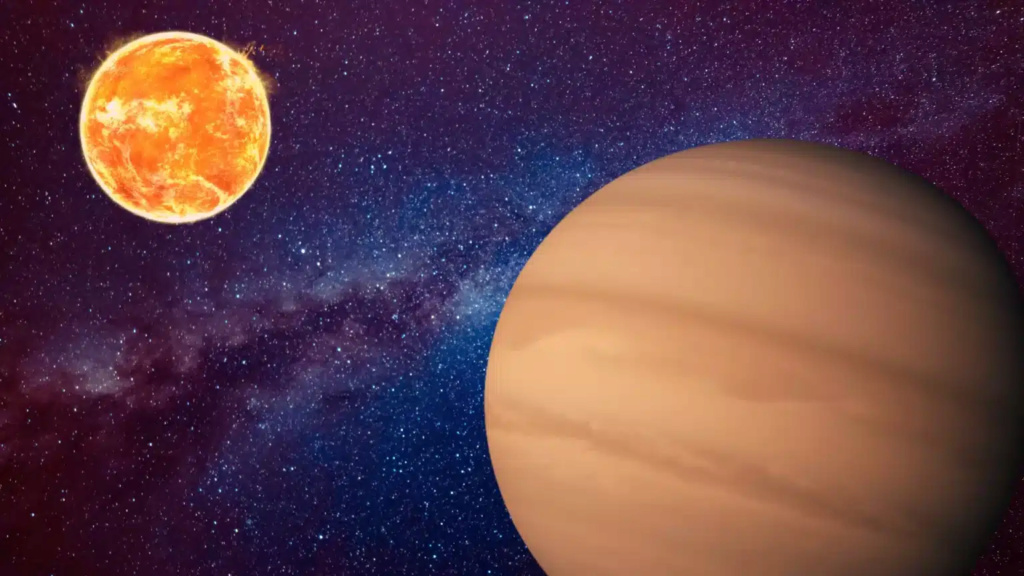Huge planet around small star baffles astronomers

A team of astronomers announces the detection of a massive Jupiter-sized planet orbiting a relatively small, low-mass star. The problem is that the known formation pathways do not predict the existence of such systems.
An unusual setup
Characterized using data from the TRAPPIST-Sud/Nord, SPECULOOS and MuSCAT3 facilities, the planet in question orbits a red dwarf star named TOI-4860 . Located in the constellation of Corvus, this object would have a mass equivalent to about a third of that of the Sun. Its planet, designated TOI-4860 b , which is slightly smaller than Jupiter, orbits very close to its host, completing an orbit in 1.5 Earth days . Therefore, this planet is considered a “hot Jupiter”.
Such a configuration is unusual. Indeed, planets like this are not supposed to form around low-mass stars. According to the established formation model, the less mass a star has, the less massive the disk of matter around that star. Since planets are created from this disk, it is therefore generally expected that high-mass planets like Jupiter do not form around low-mass stars. Here, however, TOI-4860 appears to be the lowest-mass star hosting such a high-mass planet.
But then, how could such a large exoplanet come into existence under these conditions? Researchers are still wondering, but the composition of this object could shed light on its origins.`

Illustration of a surprisingly large gas giant planet orbiting a relatively small star. Credits: Robert Lea
Heavy elements detected on the planet and its host star
TOI-4860 b appears to be enriched with a high proportion of metals (a term used to describe elements heavier than hydrogen and helium). The researchers also detected a similar composition in the host star. According to them, the abundance of these elements probably acted as a catalyst to stimulate the process of formation of the planet.

Remember that a forming star is generally surrounded by a protoplanetary disk composed of gas and dust. Planets form from the aggregation of these materials into dust grains that accumulate to form solid cores. These nuclei then gradually grow by capturing more gas and dust from the disc until they become planets.
In the case of more massive stars, the amount of metals in the protoplanetary disk can be relatively high, which favors the rapid formation of planetary cores. However, smaller stars tend to have less metal-rich disks, which can slow down the process of planet formation around those stars.
For the case that interests us, detailed in the journal Monthly Notices of the Royal Astronomical Society: Letters. , if a large planet is detected around a small star, the abundance of metals in the planet is high and this composition is also observed in the host star, then this could indicate that the protoplanetary disk was itself also enriched with metals. In such a scenario, the metals would then have acted as a catalyst to accelerate the formation of the planet by promoting the rapid aggregation of solid material in the disc , thus allowing the planet to grow faster and become more massive.
Source: websites

